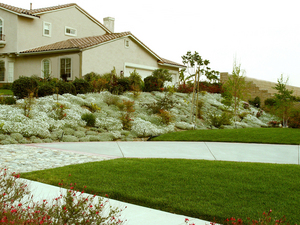A neighbor and I were taking a break recently from working in our respective yards. She does not do a great deal of gardening; however, she does have a very nice perennial bed in her front yard that provides quite a lot of color in the summer. The discussion soon turned to my numerous flower beds. I commented that the ‘creeping jenny’ and the ‘Angelina’ had finally spread enough in two of the beds so that I no longer had to mulch, except for some crushed leaves in the fall. I also speculated that hopefully within the next year or two, my “lily pad” – so named for the numerous varieties of lilies it contains – would be the same. She then observed, “Well, you have the patience.” Upon further thought, I realized that she had hit upon the key, the real secret to growing perennials and to creating a beautiful perennial garden – patience.
Perennials do not normally give you a lot of the “wow factor” in the first year or two after you plant them. Most perennials have deep roots, and they need time for those roots to develop. For example, my Shasta daisies looked nice enough the first year I planted them, but they were not quite the profuse-bloomers one normally associates with Shastas. Last year, however, which was their third year in the ground, they did me proud. I may even have to divide them after this year. It has also taken three years for my purple Echinacea to finally take hold and be able to hold its own amidst my numerous lilies. In addition, it has taken three years for my ‘Queen Elizabeth’ rose to bloom. I think I have another four or five years to wait before my wisteria blooms.
All of these examples illustrate that perennials do not normally supply the gardener with immediate satisfaction. It is true that there are some species that take hold in the garden a little quicker. Daylilies are good examples; however, I have noticed that even some of these – especially the hyprids – might take two or three years to really come into their own.
Perennials normally take so long to spread and bloom profusely that I am quite surprised – pleasantly – when one takes off almost immediately. For instance, some forget-me-nots that I acquired at a plant exchange last year began spreading almost as soon as I put them into the ground. Of course, this is not the norm. Perennial gardeners learn relatively quickly that not only are compost and mulch required for a beautiful perennial garden but also … patience.
We perennial gardeners have developed some techniques that make maintaining our patience during the waiting process a little easier. We plant bright, cheerfully blooming annuals in the gaps that will eventually be filled by the spreading perennials. We might also place some type of yard art in the open space, knowing that it will have to be moved in two, three, four years when the perennials take over. Through it all, we wait. Patiently.
If you require instant gratification, perennial gardening is not for you. However, if you enjoy watching the seedlings and bulbs and tubers that you have planted grow and mature and even change over a period of years, then perennials are the plants for you. You can also take solace in the fact that your perennial garden will provide you with years of long-lasting, easy-care beauty. You just need to be patient.
To view some of the perennials in my own garden, visit me at Dena’s Garden.




